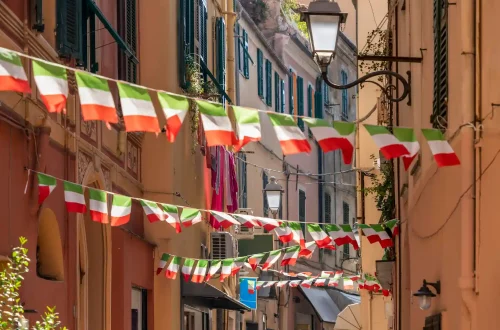Italy’s allure for American retirees
Italy has long captivated the hearts of travelers with its timeless beauty, rich culture, and relaxed lifestyle. But for many Americans, it’s more than a vacation destination—it’s an ideal place to retire.
With its mild climate, world-class healthcare, and vibrant communities, retiring in Italy offers a compelling alternative to traditional options in the U.S.
And for those with Italian ancestry, the possibility of obtaining dual citizenship makes the transition even more seamless.
Italian citizenship grants Americans the right to reside permanently in Italy without the need for long-stay visas or complex residency permits. It also opens the door to broader European Union benefits, making retirement not just a personal journey, but a gateway to continental living.
Whether you’re drawn to the rolling hills of Tuscany or the coastal charm of Sicily, retiring in Italy is a dream that’s increasingly within reach.
Criteria for choosing the ideal retirement location
Retiring abroad requires thoughtful planning, especially when choosing where to settle.
Italy’s diverse regions offer a wide range of climates, lifestyles, and costs, making it essential to match your preferences with the right location.
Climate and quality of life
Italy’s geography spans alpine peaks, Mediterranean coastlines, and fertile valleys. For retirees seeking mild weather and a slower pace, central and southern regions are particularly appealing.
Tuscany and Umbria offer temperate climates year-round, while coastal areas like Liguria and Sicily provide warm winters and breezy summers.
These regions also boast excellent infrastructure, including public transportation, walkable towns, and access to healthcare facilities—important considerations for aging residents.
Cost of living
The cost of living in Italy varies significantly between major cities and smaller towns. Urban centers like Milan and Rome tend to be more expensive, especially in terms of housing and dining.
However, smaller towns in regions like Umbria, Abruzzo, and Sicily offer a lower cost of living, allowing retirees to stretch their U.S. dollar further.
With careful budgeting, many find that their retirement income goes farther in Italy than it would in the United States.
Healthcare access
Italy’s public healthcare system, Servizio Sanitario Nazionale (SSN), is ranked among the best in the world.
Italian citizens and legal residents have access to subsidized medical care, including general practitioners, specialists, and hospital services.
Expat communities
Settling in a region with a strong expatriate presence can ease the transition. Areas like Florence, Rome, and Lake Como have well-established American communities, complete with English-speaking services, social clubs, and cultural events.
These networks provide support, friendship, and practical advice for navigating life in a new country.
Take advantage of specialized assistance to secure your passport for a borderless future.
Recommended regions for retirees
Italy’s regional diversity means there’s something for every retirement style—from quiet countryside living to vibrant urban experiences.
Tuscany
Known for its rolling hills, Renaissance art, and world-class wine, Tuscany is a top choice for retirees seeking tranquility and culture.
Towns like Lucca and Siena offer a slower pace of life, excellent healthcare, and a strong sense of community.
Umbria
Often called “the green heart of Italy,” Umbria is a less touristy alternative to Tuscany.
It’s more affordable, equally picturesque, and rich in medieval architecture and culinary traditions. Cities like Perugia and Spoleto provide charm without the crowds.
Sicily
For those who love warm weather and coastal living, Sicily is ideal. The island boasts a low cost of living, stunning beaches, and a laid-back lifestyle.
Towns like Taormina and Siracusa offer scenic beauty and historical depth, while Palermo provides urban amenities.
Lombardy
If you prefer a more metropolitan retirement, Lombardy—home to Milan—offers advanced services, international connectivity, and cultural sophistication.
Milan is a hub for fashion, finance, and healthcare, making it suitable for retirees who want access to top-tier amenities.
Advantages of Italian citizenship for American retirees
Holding Italian citizenship transforms the retirement experience from a temporary stay to a permanent lifestyle.
Residency without visas
Italian citizens can reside in Italy indefinitely without applying for long-stay visas or renewing residency permits.
This simplifies the legal process and removes the uncertainty that non-EU retirees often face.
Tax benefits
Italy offers favorable tax regimes for foreign pensioners, including a 7% flat tax for new residents and bilateral agreements with the U.S. to prevent double taxation.
These incentives can significantly lower the tax burden on retirement income, especially for those relocating from high-tax states in the U.S.
Access to public services
Citizenship grants full access to public services, including healthcare, transportation discounts, and cultural programs.
Retirees can benefit from senior discounts on trains, museums, and local events, enhancing both affordability and quality of life.
Take advantage of specialized assistance to secure your passport for a borderless future.
How Italian citizenship simplifies the retirement process
Beyond legal residency, Italian citizenship streamlines many aspects of daily life for retirees.
No need for long-stay visas
Without citizenship, Americans must apply for elective residency visas, which require proof of income, housing, and health insurance.
These visas must be renewed regularly and can be revoked if conditions change. Citizenship eliminates this bureaucracy entirely.
Property ownership and banking
Italian citizens face fewer restrictions when purchasing property or accessing financial services.
They can buy homes, open bank accounts, and invest locally without the limitations imposed on non-residents.
This makes settling down and managing assets far more straightforward.
A retirement worth pursuing
Retiring in Italy offers more than scenic views and delicious food—it’s a chance to embrace a lifestyle rooted in culture, community, and well-being.
For Americans with Italian ancestry, obtaining citizenship unlocks a world of possibilities, from legal residency to healthcare access and financial advantages.
Whether you’re drawn to the vineyards of Tuscany, the beaches of Sicily, or the sophistication of Milan, Italy welcomes retirees with open arms.
With the right planning and citizenship status, your golden years can be spent in one of the most beautiful and enriching countries in the world.






